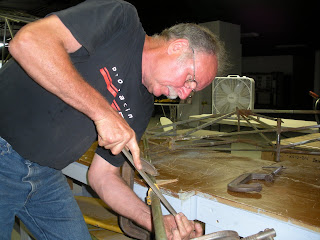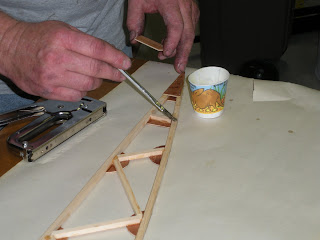Sweet ride . . . Triumph Speed Triple
I was walking down the street one day on my way to the EAA 143 Aeronca Glider Project when I saw this urban sports toy. Since I had my camera, why not take a picture. I love bikes. Ever since I was a teen, I either had one, or wanted one. I finally bought one when I was 15 years old, which by the way was just about the time I started flying airplanes in the Civil Air Patrol. Anyhow, one day I was in a motorcycle store buying some parts for my Honda when I just happened to look up. Guess what I saw. Yep, an airplane was hanging from the ceiling. It was an ultralight. It was then that the light bulb went off, people that like motorcycles like airplanes. I have notice this phenomena many times over the years, and this was no exception. Now that you know about this, you will also notice the correlation. Oh, I forgot to mention that the Triumph was sitting in front of the EAA143 chapter meeting building. So, when I went inside I started asking each person. Is that your motorcycle? John said no. Leo said no. Dick said no. Joe said no. Hey, there is a new guy here, must be his.
Paul Straney . . . the new guy.
The new guy, Paul Straney, is the biker. Here is a picture of him working on the tail of the glider. He is filing the rough spots that were left as a result of cutting to enlarge the vertical tail. His background includes working for the National Guard as an Airframe Technician, A.K.A. an airplane body and fender guy. Welcome aboard Paul!
Lunch is served every Saturday at 12:30pm
Joe cooks every week. This week he served pulled pork and potato salad. Joe also cooks for the monthly EAA 143 meeting which occurs the fourth Tuesday (except December). Maybe you have heard, but if you haven't, Joe is a great cook. It's just one more reason to come out and help :-)
Now we have one more helper, and the glider project is moving forward. In the comming weeks I will update the progress on the wing ribs and fuselage modifications. Stay tuned.























